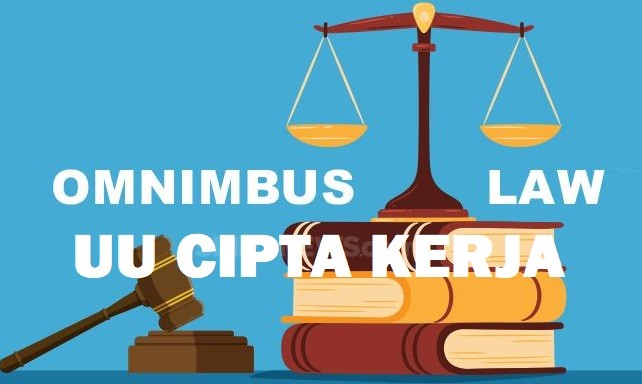The Job Creation Law Facilitates the Infrastructure Development Process
By: Raavi Ramadhan) *
Infrastructure development is an indicator of the progress of a nation, this development must of course be supported by the existence of the Job Creation Law.
It will be easier to procure land for the benefit of the community, including for infrastructure development. Following the issuance of implementing regulations from law number 11 of 2020 concerning Job Creation through Government Regulation (PP) Number 19 of 2021.
Acting Director General of Land Acquisition and Land Development at the Ministry of Agrarian Affairs and Spatial Planning / National Land Agency (ATR / BPN) Himawan Arief Sugoto said the government would continue to develop infrastructure in various regions.
In the development of this infrastructure, one of the things that is important to note is related to land acquisition. Because according to him, in order for infrastructure development to run smoothly, land acquisition must also be fast. So that the land acquisition mechanism plays a crucial role in supporting national infrastructure development.
Himawan in his press statement said that the PP on land acquisition for development for the public interest which consists of 7 chapters and 143 articles covers the implementation of land acquisition and the ease of land acquisition for national strategic projects (PSN).
Regarding land acquisition for public interest, it is carried out through stages. For example, starting from the stages of planning, preparation, implementation, and submission of results. He also explained that land acquisition is an early stage in infrastructure development so that the planning stage is very important, so that the next stages can run smoothly.
Meanwhile, Expert Assistant to the Minister of ATR / Head of BPN for Land Acquisition, Arie Yuriwin, said that the planning stages are based on spatial planning and development priorities. In addition, agencies requiring land can also involve Ministries or Institutions (K / L) in the land sector and related agencies.
It is hoped that in the planning stage there will also be no differences, so the Ministry of ATR / BPN will participate in providing data so that there are no differences in data in documents. Previously, land acquisition regulations had existed since the 1990s. In 1993, in order to carry out land acquisition activities, the government issued a Presidential Decree of the Republic of Indonesia (Keppres RI) No.55 / 1993 concerning Land Acquisition for the implementation of development for the public interest.
The government then issued Presidential Regulation (perpres) No.36 / 2005 concerning land acquisition for the implementation of development for the public interest and Perpres No.65 / 2006 concerning amendments to Perpres No. 36/2005 concerning Land Acquisition for the implementation of development in the public interest.
In 2012, the government issued Law No.2 / 2012 on land acquisition for development in the public interest. The presence of this rule has gone better.
However, there are still obstacles such as land acquisition planning documents that are not supported by accurate data and budgets, resulting in revisions because they are not in accordance with physical conditions. This resulted in an increase in the budget. Then the location determination issued by the governor, was not in accordance with the spatial layout, as a result there was rejection in its implementation.
Whereas in Law No. 11/2020 concerning Job Creation, it has provided a breakthrough in the implementation of land acquisition. A number of obstacles encountered in implementing the previous rules can be overcome.
If the land acquisition location is included in a forest area, the forest area will be released, the provisions of which will be regulated in a derivative regulation. In the Job Creation Law, it also mandates the Ministry of ATR / BPN to prepare land acquisition planning, of course the Ministry of ATR / BPN will provide a lot of input from the planning aspect.
On a different occasion, Surya Vandiantara as an economist at the Muhammadiyah University of Bengkulu, assessed that activities such as changing agricultural land use are very likely to occur. However, the government is still bound by the rules, that (the government) is responsible for domestic food production.
So that indirectly, it obliges the government to open new agricultural land to replace land that has been converted.
This provision is contained in article 31 of the Job Creation Law which amends article 19 of Law no. 22 of 2019 concerning the Sustainable Agricultural Cultivation System, and article 124 of the Job Creation Law which amends article 44 of Law No. 41 2009 concerning the protection of sustainable food agricultural land.
This law of course not only facilitates land acquisition for infrastructure development, but also has an impact on job creation and protection of agricultural land, both of which can go hand in hand.
) * The author is a contributor to the Cikini Press Circle and Students
